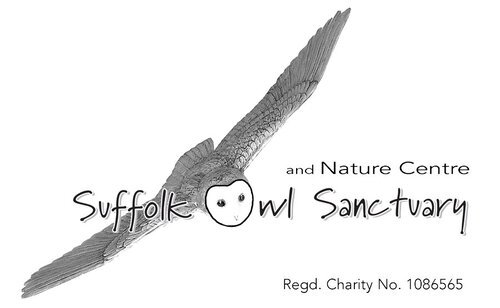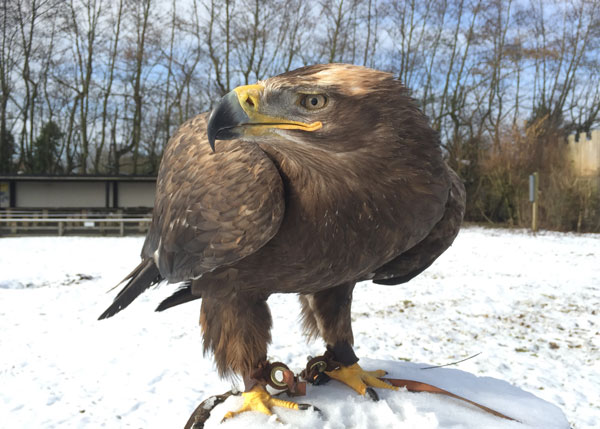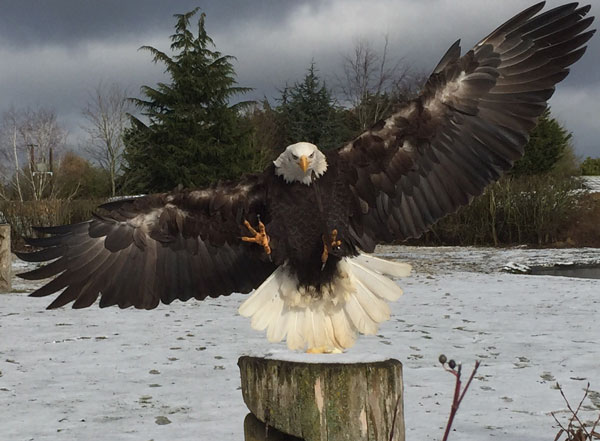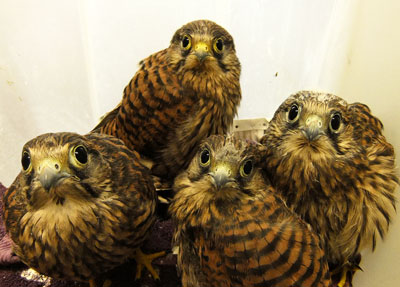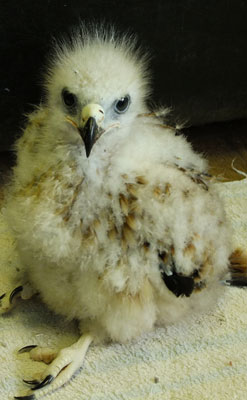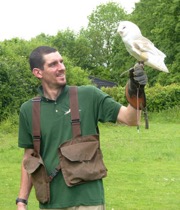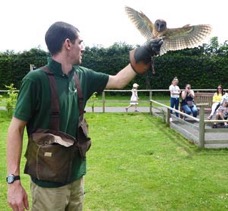Despite concerted efforts to convince ourselves that Spring is just around the corner, Suffolk was hit by a cold snap and a covering of snow this week.
Luckily, our birds are all well insulated with plumage and housed in warm dry accommodation, so they are not adversely affected by plummeting temperatures. Many of our display team originate from parts of the globe that suffer harsh weather conditions and are well suited to dealing with wind chill factors such as those experienced recently. Others are migratory birds which move to warmer climes when cold weather hits.
Either way, snow is still a fairly rare occurrence at the sanctuary and one that must be celebrated by both man and beast! The falconry team flew several birds free this week, enabling them able to experience this strange phenomenon called snow.
Rocky weighs up the strange white world and icy pond!
Rocky the Turkey Vulture, a species more used to enjoying scorching American temperatures, seemed perfectly at home in the crisp winter atmosphere and continues to progress well in his training to become part of the seasonal flying team.
Mir, the Steppe Eagle is a migratory bird hailing from the cold steppe region of central Asia and southern Russia, ranging easterly from Romania to Mongolia. Steppe regions and their human, mammalian and avian inhabitants are subject to incredible extremes of temperature, ranging from 45 deg. C (113 deg. F) in summer to -55 deg. C (-67 deg. F) in the winter months.
Mir the Steppe Eagle feels at home as the temperature drops!
These areas also experience huge contrasts in the day and night-time temperatures - in the highlands of Mongolia daytime temperatures of 30 deg. C (86 deg. F) can plummet to sub-zero figures at night. Mir, then, is easily able to take a delicate sprinkling of Suffolk snow in her stride and appeared to thoroughly enjoy the nippier conditions!
Lincoln the Bald Eagle - now reaching his maturity - has rarely seen snow in his five years of life, but his genus is well equipped for a colder climate. The Bald Eagle’s natural range includes the northern American states and Canada - when numbers were somewhat depleted during the 1950s, the species was restricted to Alaska and the Aleutian Islands.
Juvenile Bald Eagle, Lincoln, comes in for a snowy landing.
Like the Steppe, the Bald Eagle migrates to warmer climes in winter, namely Florida, Louisiana, the Sonoran Desert and northern Mexico. Having been somewhat spoilt in the relatively tropical Suffolk climate to date, Lincoln was unphased by the wintry conditions and behaved impeccably - giving shivering visitors to the sanctuary a heartwarming impromptu performance!
Despite the birds’ apparent pleasure at cold weather flying, the humans of the sanctuary hope that it won’t be too long before they are putting the birds through their paces in more sultry conditions!!
Many thanks to Jess for the photos, one of our multi-talented falconers, who is also a dab hand with the camera, and to Cathrine, our lady of letters who penned today's blog!
